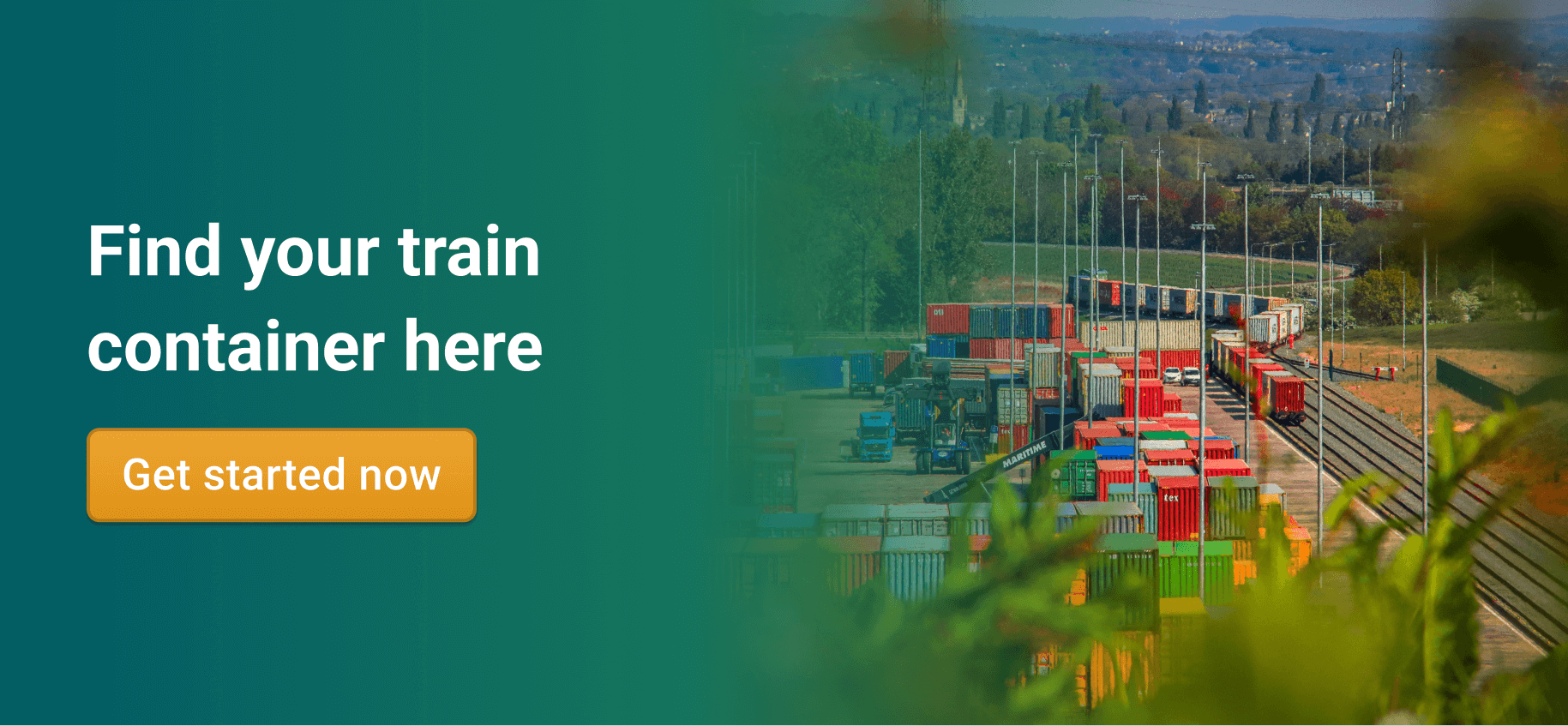If you’re on the lookout for train containers for your rail freight, you’ve hopped aboard the right blog. We’re going to take you through all the details surrounding train containers and get you your box.
The cargo is set; the dates are decided, and the goods need to reach their destination soon. The plan is in place, but there’s still something missing— the right container to transport the cargo. You know what that means? Head to Container xChange and find that right box at your fingertips. That’s not all, you won’t just have the right container but you’ll have the right box at the right price as well.
So, you can now sit in the comfort of your office and look through 10,000+ container types across 2,500 locations worldwide on your screen. You’ll also get your box at negotiable, competitive prices with zero hidden costs and commissions.
But what about sketchy suppliers on the net who can’t be trusted? Not to worry because you get 1000+ vetted suppliers who have gone through a mandatory vetting process, and are 100% certified.
Sounds too good to be true, doesn’t it?
Well, Container xChange our online neutral marketplace is here to make your work of getting train containers a lot easier!
But before you do that, let’s take you on a tour of train containers so you know exactly what box to get for your needs.
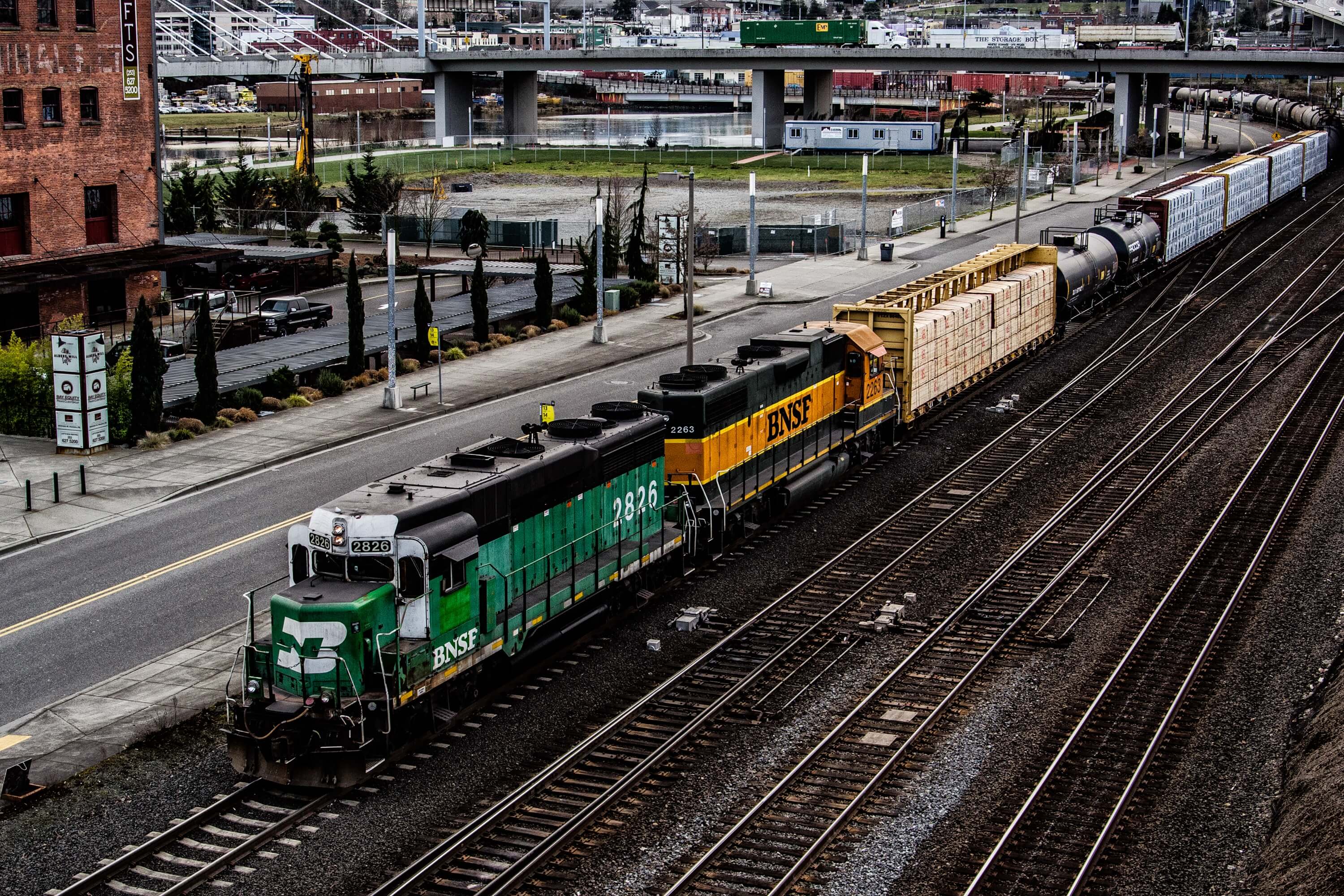
Train containers: Definition and uses
To understand train containers, you must first know what intermodal containers are. If you’re not entirely aware of what these boxes have to offer, let us fill you in. The term intermodal refers to containers that are transported via various means of transport (ship, rail, air, and road) without the need to unload/reload the items inside.
Since this blog is all about train containers let’s steer back to the topic at hand. When it comes to transportation of goods by trains, it’s mainly focused on bulk cargoes. Hence, containerizing is crucial to avoid cargo being dropped, or shoved into a railroad car in a haphazard manner.
So, what types of boxes can be used for rail freight?
The popular ones: 20ft DC, 40ft DC and high cubes are compatible with rail freight for all your dry cargo needs (for example, types of tools and machinery, barrels, clothes, pipes, coal, and sand). High cubes hold more cargo, especially the ones with bigger heights, so you might want to opt for that if you have cargo that has higher heights.
Apart from these boxes, there are various other special container types that you can use for rail freight. You can find out more about the special container types in this separate blog.
When looking for train containers, another thing you should keep in mind is the condition of the container. If you don’t want to spend on brand new boxes, you can always opt for used containers which are cargo worthy and come at lower costs.
If you want to find out more about used containers check out our blog for more info.
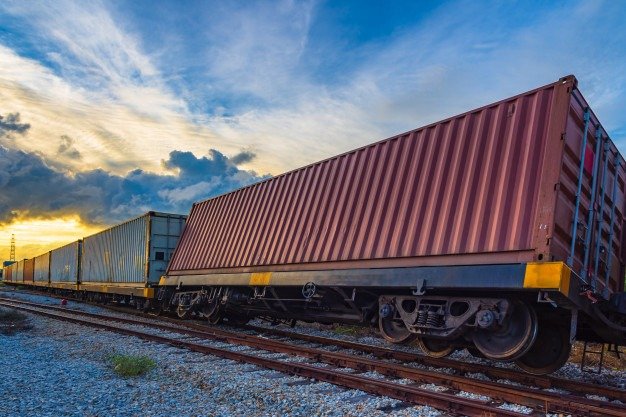
Rail vs air vs sea: Which mode of transportation is best for your freight?
After you’ve narrowed down your type and condition, it’s essential to find out which type of transportation is best for carrying your freight.
Rail freight
Pros of rail freight:
- Rail freight trains have as many as 100 wagons for storage which means they can transport tonnes of cargo across long distances.
- They are eco-friendly as they use electricity to operate. This emits low CO2 levels.
- They are very cost-effective for long-distance freight transportation.
- They have reliable transit times and schedules since trains don’t get affected by traffic or bad weather.
Cons of rail freight:
- They are costlier when it comes to short-distance freight transportation.
- Hazardous cargoes cannot be moved in normal rail cars, it requires special equipment.
- There are also rail connectivity issues in the hinterlands that can affect the transportation of cargo.
Air freight
Pros of air freight:
- This is the fastest form of freight transportation.
- It gives you reliable real-time departure and arrival information.
- It has a higher rate of security for your goods.
- It’s very dependable because your goods are guaranteed to reach you with a 99.99% success rate.
Cons of air freight:
- It’s an expensive affair, calculated on actual (gross) weight or volumetric (dimensional) weight.
- It has restrictions on bulk and is not able to move large or heavy cargo.
- Just like trains, it is not able to transport many hazardous substances.
- It has a large carbon footprint.
Sea Freight
Pros of ship freight:
- This is by far the most cost-effective form of freight transportation. It’s calculated on a price per container basis.
- It’s possible to ship large volumes of cargo including big, heavy goods.
- It has a lesser carbon footprint in comparison to air freight.
- Highly reliable, you get your goods at a 99.99% success rate.
Cons of sea freight:
- It has a slower transit time, often up to 10x slower than that of air freight.
- There is a high risk of container ships experiencing delays in port or being unable to load/unload cargo.
Now that you’ve got more insight into all the different types of freight transportation, which one do you feel is the best for cargo? Let us know in the comment section below this blog. We’d love to hear from you.
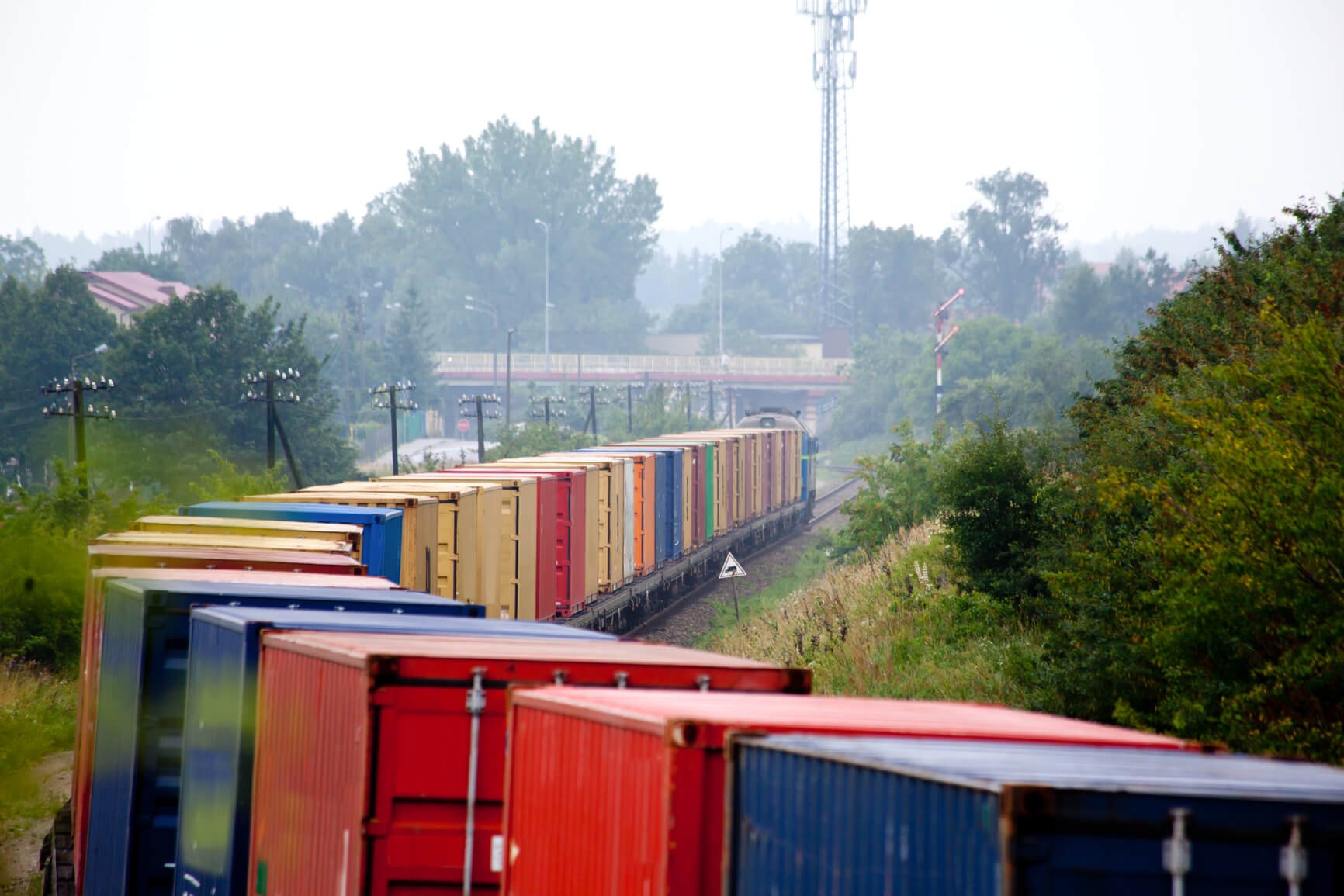
Top railways around the world
Before we move on let’s take you through the top 5 countries with the largest railways in the world.
Taking the number one spot is the United States of America. It houses the world’s largest spread railway network. The total length = 257,560 km. This railway network is used in America for freight transportation. It is followed closely by China. The total length of the railway tracks is more than 150,000 km. The third on the list is Russia with a total length of 85,600 km.
Coming in fourth is India. India has a total route length of 70,225 kilometers with a total track length of 126,366 km. The railway track here is a major means of transportation for both passengers as well as freight. And the fifth spot goes to Canada. The total length of the railway is 49,422 kilometers. The railways here are typically used for freight purposes.
Popular railway stretches in the world
You now know where the top railways in the world are. Let’s move ahead to the four popular stretches these train containers are moved across.
| Railway network | Country | Stretches |
| China Europe Railway Express via Russia’s Trans-Siberian line | China to Europe. | From Harbin to Hamburg. |
| Trans-Siberian Railway | Japan to Russia | From Kobe to Primorskiy Krai. |
| International North-South Transport Corridor (INSTC) | Europe to India. | From Helsinki to Nhava Sheva. The train travels through Russia and reaches the Bandar Abbas port in Iran. Over here the cargo is moved onto a ship and follows a sea route through the Indian Ocean to its final station.
|
| Belt and Road Initiative | China to Europe | Yiwu, in China’s Zhejiang Province to Madrid. |
Europe, China and Russia see a lot of rail freight traffic, hence, we decided to give you examples of stretches in these countries. In terms of rates, the price for the transportation of train containers can cost anywhere between US $2,900 to US $10,000. Depending on the transported goods, the type and condition of the container, and the distance they have to travel.
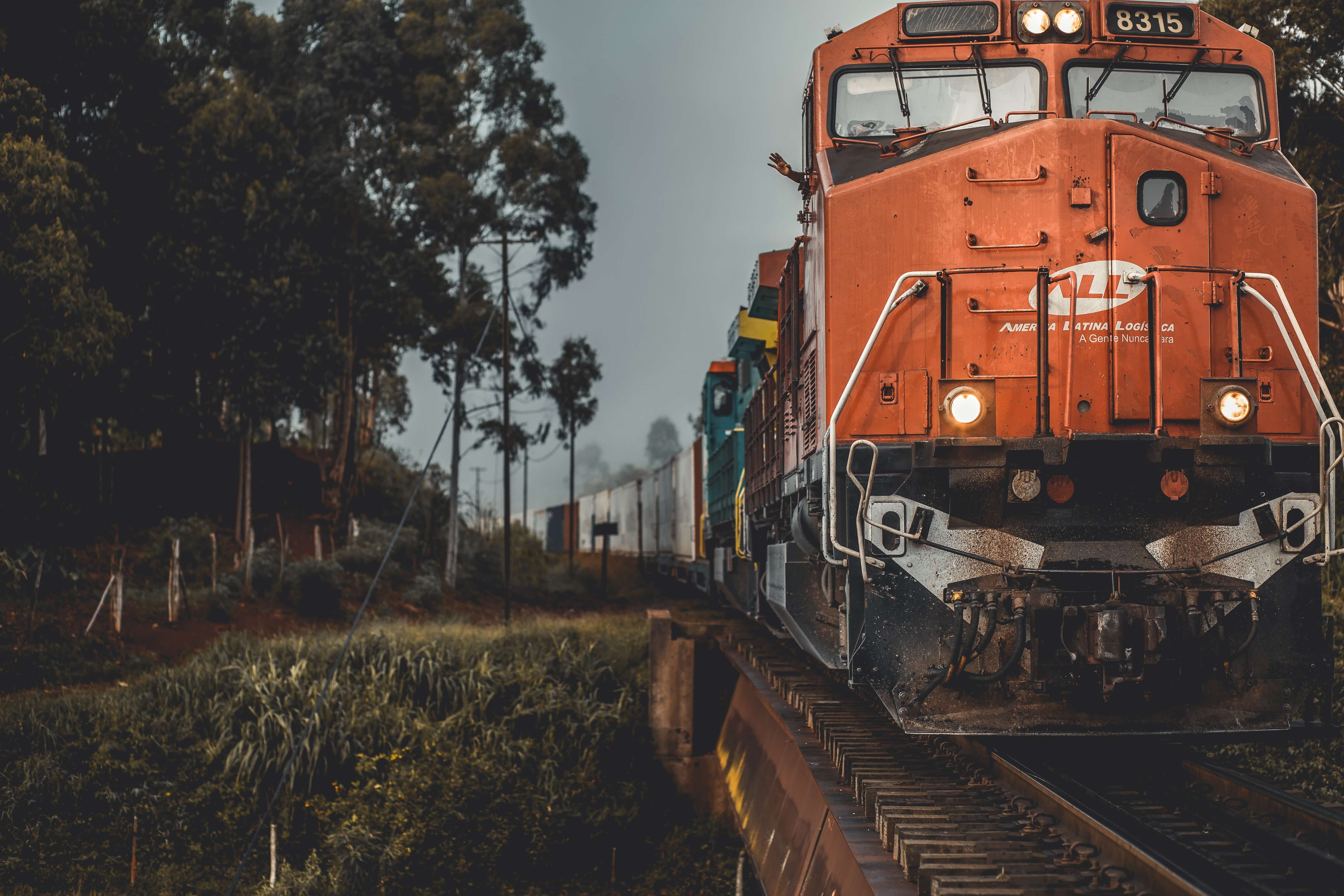
More on train containers: Double stack rail transport
You got an understanding of the container types and how intermodal transportation is carried out, but do you know what double-stack rail transport is? Simply put, it is a type of intermodal freight transport in which railroad cars carry two layers of intermodal containers.
Basically, double-stack containerization means stacking containers on top of each other inside the train compartments. This allows the train to carry almost twice as much cargo – talk about taking the extra load.
So how do they carry this double load? By using dual-stack technology. This mechanism allows a freight train of a given length to transport approximately twice as many containers. This in turn reduces the transportation cost of each container and increases the capacity.
Special well wagons are used for double-stack transportation. These wagons reduce the required vertical clearance and lower the center of gravity of the loading train. They also reduce the damage during transportation and provide higher cargo security by supporting the lower container so that the door cannot be opened.
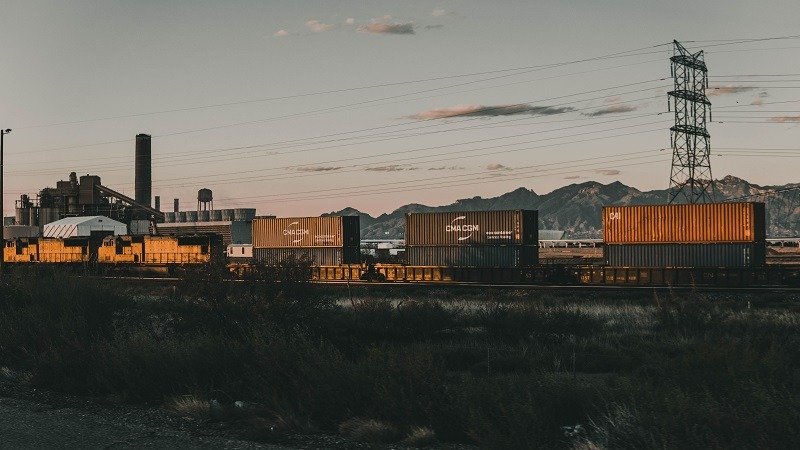
Intermodal train containers: Should you buy or lease boxes?
You’ve learned a lot so far and we bet the next question on your mind must be whether to lease or buy your train containers, right? Well, we’re here to help you decide.
4 benefits of buying
- If you need a box for permanent and frequent use, investing (buying) is the best idea.
- Does your usage demand always remain high? Then buying is your ideal choice.
- If your requirement is largely for storage purposes, buying a box should be your go-to.
- To modify a container or convert them into something else, say an office space, we recommend you buy a container.
4 benefits of leasing
- Flexibility is one of the biggest advantages you get with leasing. You can lease a container for however long you need them.
- Leasing is beneficial if you don’t have enough capital for an upfront payment to buy a container.
- It helps if you’re facing a temporary surge in demand for containers. You can increase your fleet and lease extra containers even when you don’t have cash in hand.
- You can also choose to lease a container when you’re unsure about your long-term demand developments.
Buy or lease train containers on xChange
So, are you thinking about leasing or buying a box? Whatever you desire, at Container xChange, you can lease and buy train containers as per your needs.
You get the same benefits no matter what you choose. We offer full market price transparency so you can compare and negotiate prices to bag a deal that suits your budget. All at competitive prices without any commissions or hidden fees. You also have direct access to vetted and certified members without a middleman. You can chat or call them straight from the xChange platform.
If you’re looking for a train container, we offer a wide range of SOC containers for your rail freight. But why SOC, you ask? Imagine your company is transporting cargo from Europe to China. This means that you have to source your container so that you can move the goods. This is where Container xChange can help you find an SOC container. Once you have moved cargo via rail, you can sell the container again on our platform at a good price and help in repositioning them – problem solved!
Also, by using an SOC container you can save a lot of money on demurrage and detention as your daily rental fees do not depend on the duration of the rental. They stay the same price per day.
So go on and get your SOC train container at the most competitive price in a matter of a few seconds on our platform. You’ll have access to reputable companies, who you’ll be able to negotiate prices and terms with to ensure you’re happy before signing a deal on your SOC. Now you have the solution to your problems! Click on the banner below and let out expert team guide you to your box.
Get various train containers at great prices on xChange
It suffices to say that you’ve come out of the tunnel of troubles to the light on the other side of solutions, haven’t you? Not only do you have the lowdown on train containers and railways, but you’re also so much closer to finding your box!
Apart from the assurance of certified suppliers, a long list of container types and a transparent marketplace to help you pay exactly what you want to, and not a penny more. We have some more goodies to make your day.
We have a great payment handling system also known as the xChange wallet, which generates only one bill for you to pay (so you don’t have to deal with different companies and country regulations) and manages all your transactions in one place.
Nice, isn’t it? You also get container insurance, get to skip lengthy contract negotiations, plus monitor your containers in real-time. You also receive container status updates and tracking alerts – such as ETAsWhat is estimated time of arrival? Estimated time of arrival, commonly known as ETA, is a frequently used term globally to denote the time of coming. In the shipping & logistics industry, it is ... More and misuse warnings.
Go on then hop onboard with our existing rail freight customers such as Hesion, United Container Services, Ningbo Dashing, Sea & Rail Link Logistics (Dalian) Co.,Ltd and Sichuan Xunlai. And enjoy hot deals on your train containers. We can start you off with our membership plan, where you get unlimited access to buying searches and transactions without paying any commission. Click on the banner below to see what’s in store in our marketplace.
Train containers: Common FAQs
What is a train container?
Train containers are basically intermodal containers. They are used to transport cargo via railways.
How many containers fit on a train?
The containers can be double-stacked, which means up to 10 containers can be carried in one railcar.
How do containers stay on trains?
Containers are secured by a bulkhead built into the railcar.
What are train containers called?
Train containers are also called intermodal containers, often called shipping containers or freight containers.




